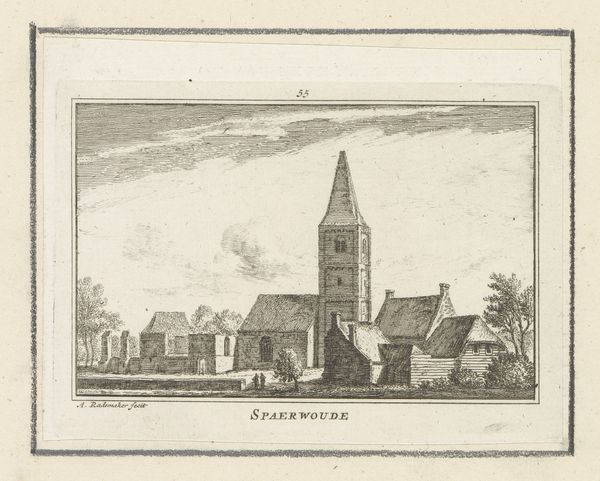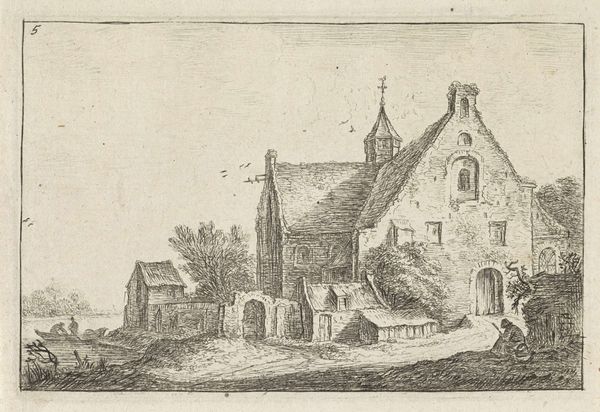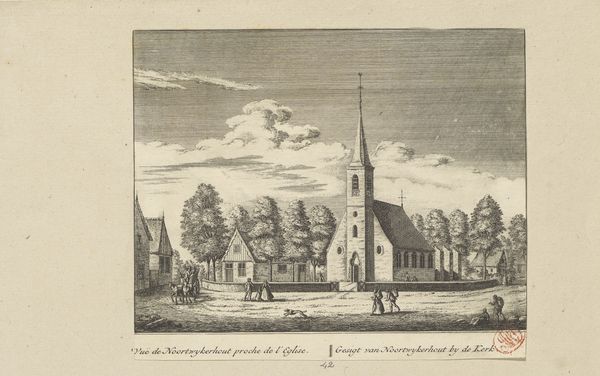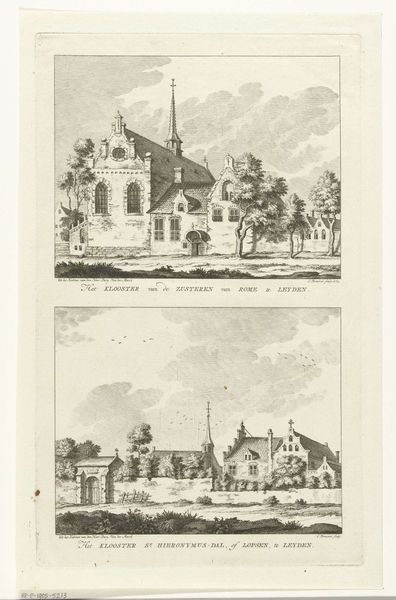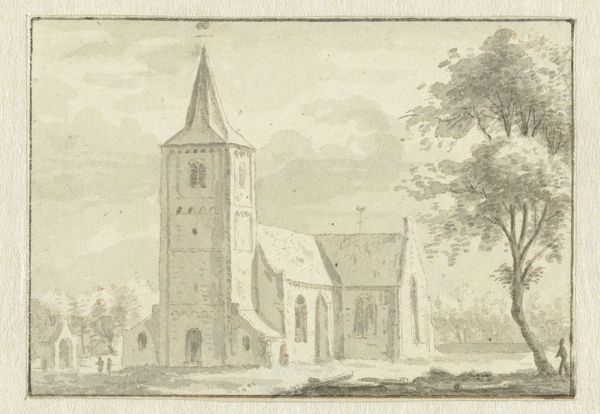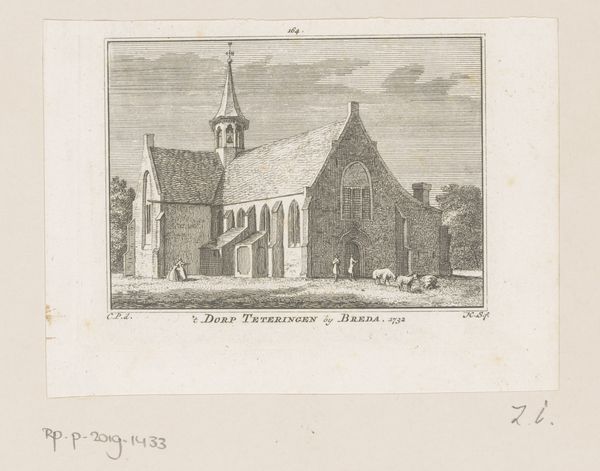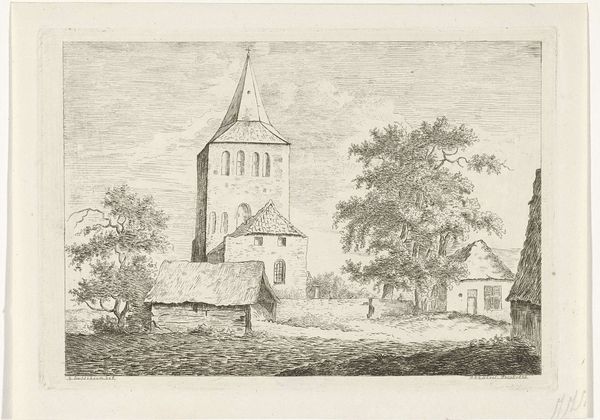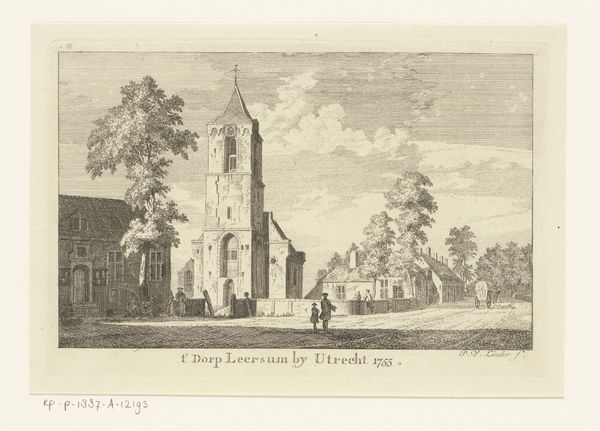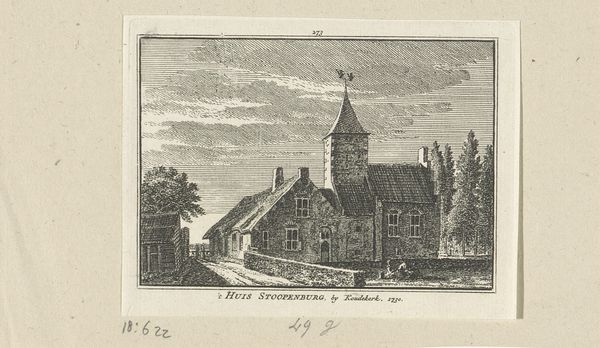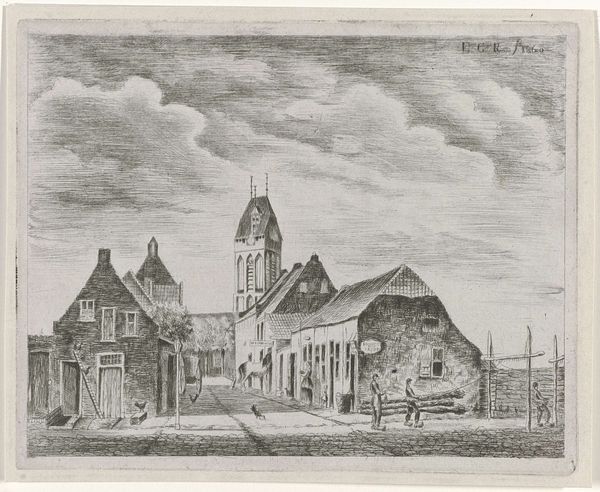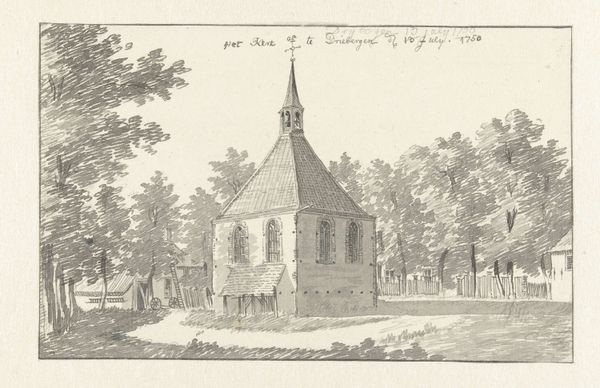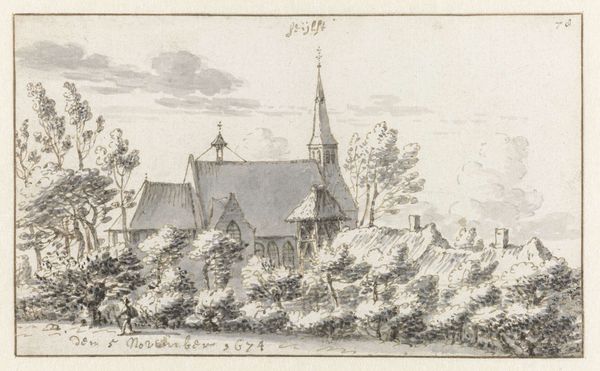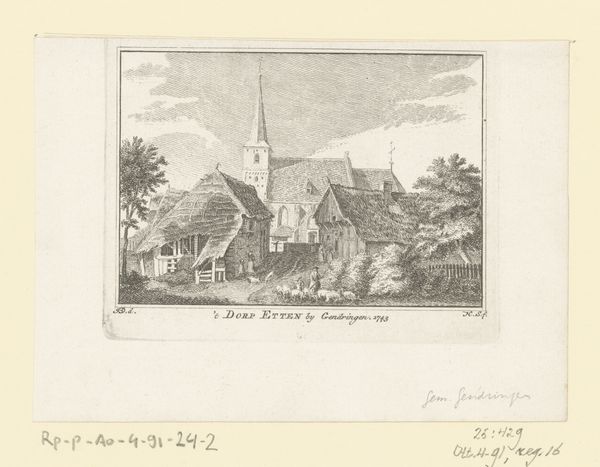
print, engraving
#
baroque
# print
#
old engraving style
#
landscape
#
cityscape
#
engraving
Dimensions: height 80 mm, width 110 mm
Copyright: Rijks Museum: Open Domain
Curator: Ah, this strikes me as a quiet sort of piece. Sort of contemplative in a grey afternoon kind of way. What do you think? Editor: Yes, quiet, but actively so. What we're looking at is a print by Hendrik Spilman, titled "Gezicht op Zelhem" from 1745. The Rijksmuseum houses it now, and it's really all about process: etched lines forming the townscape, acid eating away to create those depths and shades. It’s amazing to consider all the work and care it must have taken. Curator: Exactly! I find myself lost in those lines—it’s so carefully composed. But there's also this stillness about it, as if Spilman captured the very soul of the village. That sky especially has this weight and feeling like it may drizzle at any moment. Editor: Agreed. The layering here really shows the mastery Spilman has of this Baroque printmaking technique. Those little figures—and I use the term very intentionally; you could make an argument these forms weren't fully respected or given depth but are a means to an end—around the fountain remind us of the consumption aspect. Who was looking at these images, and why? I wager not the workers portrayed here. Curator: That's a thought! Maybe it was intended for wealthy city dwellers who had a sentimental affection for the idyllic rural scene? The fountain does serve almost like a stage, doesn't it, placing it as the focal point. Is it an act of preservation on Spilman’s part? Editor: Possibly—or even propaganda showing happy villagers doing…village things. Consider how the engraving process was industrialized and commercialized at the time; Spilman, despite how deeply or how moved *he* was by the process, participates in that larger system, intentionally or not. It makes me reconsider its inherent beauty. Curator: True. I always appreciate how art offers many perspectives to examine—often seemingly conflicting but yet, simultaneously possible. A somber note, perhaps, to leave on, but maybe that’s a more honest note, after all. Editor: A vital aspect for understanding Spilman’s practice and those of the time! Examining those competing tensions can open pathways to considering our relationship to our modern processes and consumerism. Thanks for offering your insights.
Comments
No comments
Be the first to comment and join the conversation on the ultimate creative platform.
